Christiaan van der Klaauw Planetarium Dunes of Mars: The Red Planet on your Wrist
by Martin Green
Mars is a planet with a lot of mystery, its red sand surface occupying the dreams of those who ache to set foot on its surface. For watch enthusiasts who want to make waiting until that happens a bit more bearable, Christiaan van der Klaauw introduces the Planetarium Dunes of Mars.
In essence, this is “just” a Planetarium model with a dial made of red aventurine. In reality, though, it is a superb addition to a collection that is simply without peer.
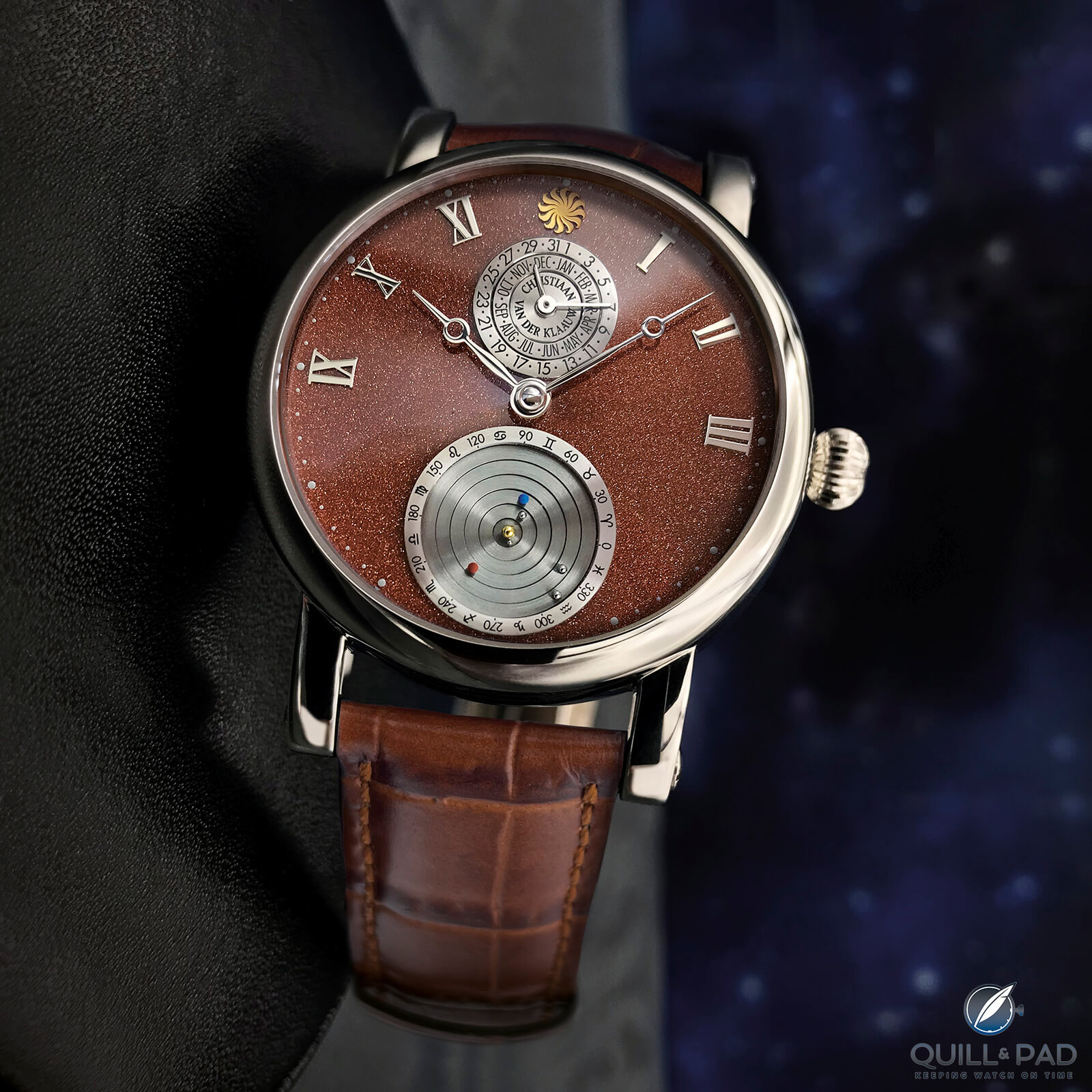
Christiaan van der Klaauw Planetarium Dunes of Mars in steel
The van der Klaauw Planetarium is very impressive as it contains the smallest mechanical planetarium in the world. Located at 6 o’clock, it displays the orbit of six planets around the sun. Mercury is the fastest, making a full rotation in 87.97 days, while it takes Saturn 29.46 years to do the same.
While it is not as dynamic as some people imagine this complication to be, the fact that it is this small and on the wrist is mind-blowing. Christiaan van der Klaauw balances this complication on the dial with a subdial indicating the date and month at 12 o’clock. Above that, we find the brand logo flanked on each side by Roman numerals. This works wonders for the overall appearance of the watch, which is clean and spacious but also contemporary with a classic twist.
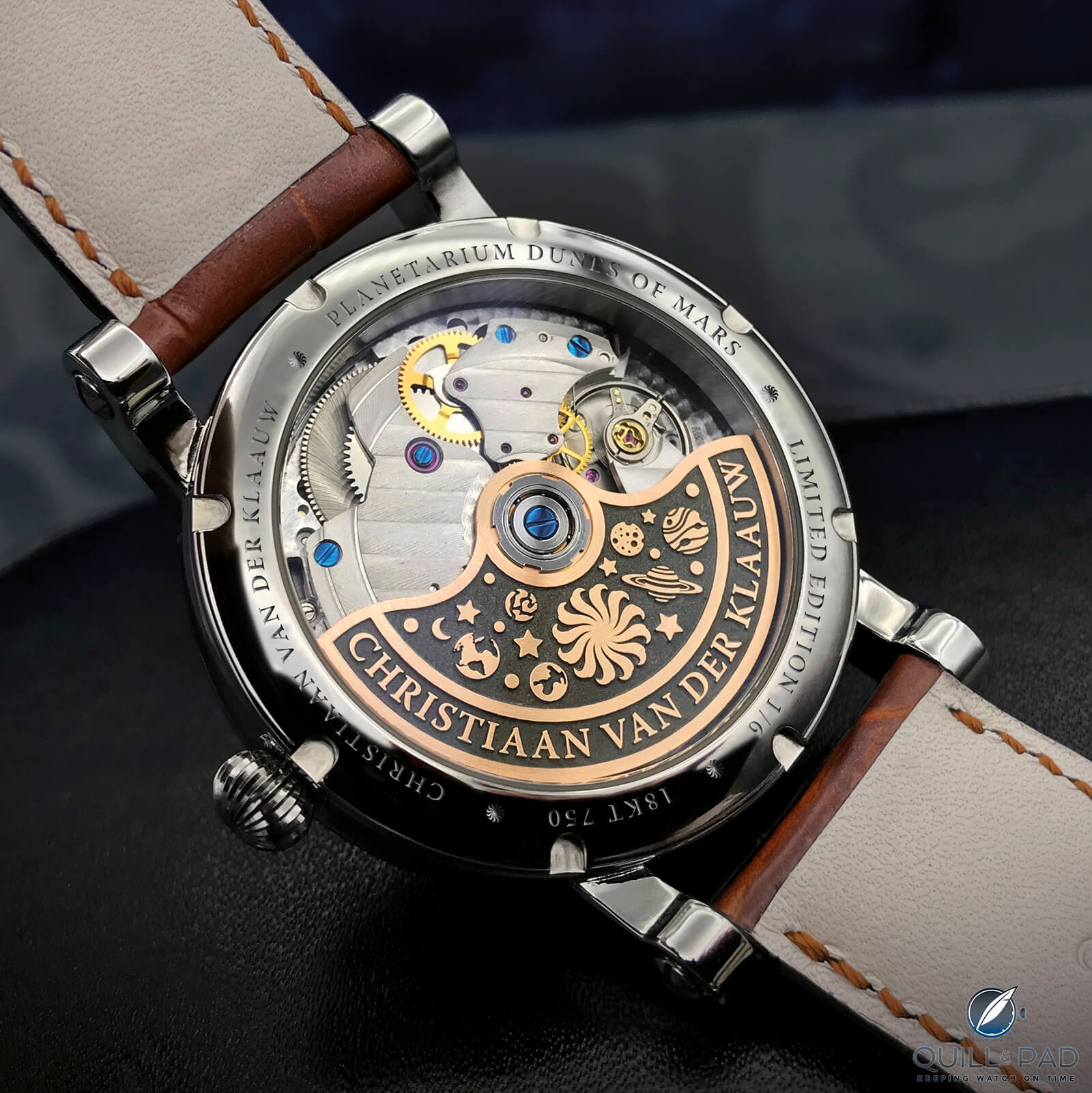
Back of the Christiaan van der Klaauw Planetarium Dunes of Mars
The 40 mm case complements this: it not only perfectly frames the dial, but also reveals the glorious movement through a sapphire crystal insert on the back. Caliber CVDK7386 is a true powerhouse, offering the complex planetarium complication and a power reserve of an impressive 96 hours. The movement is an excellent fit for the case and winds itself thanks to a stunning oscillating weight engraved with stars, planets, and the CVDK logo comprising a sun with 12 “claws.”
Red aventurine
Aventurine is a natural mineral rarely used in watches. It is also the name of a glass material more often used that contains copper specks that encourage a beautiful play of light and resemble a starry sky. Because of this, dark blue is the most popular color currently in use.
While aventurine seems to be increasingly popular in high-end watches in the last few years, it has been around for quite a while. For example, IWC already used the material to craft the moon phase disks for the Da Vinci Perpetual Calendar Chronograph and Portofino Perpetual Calendar in the second half of the 1980s. Other colors have been released over the years but remain rare.
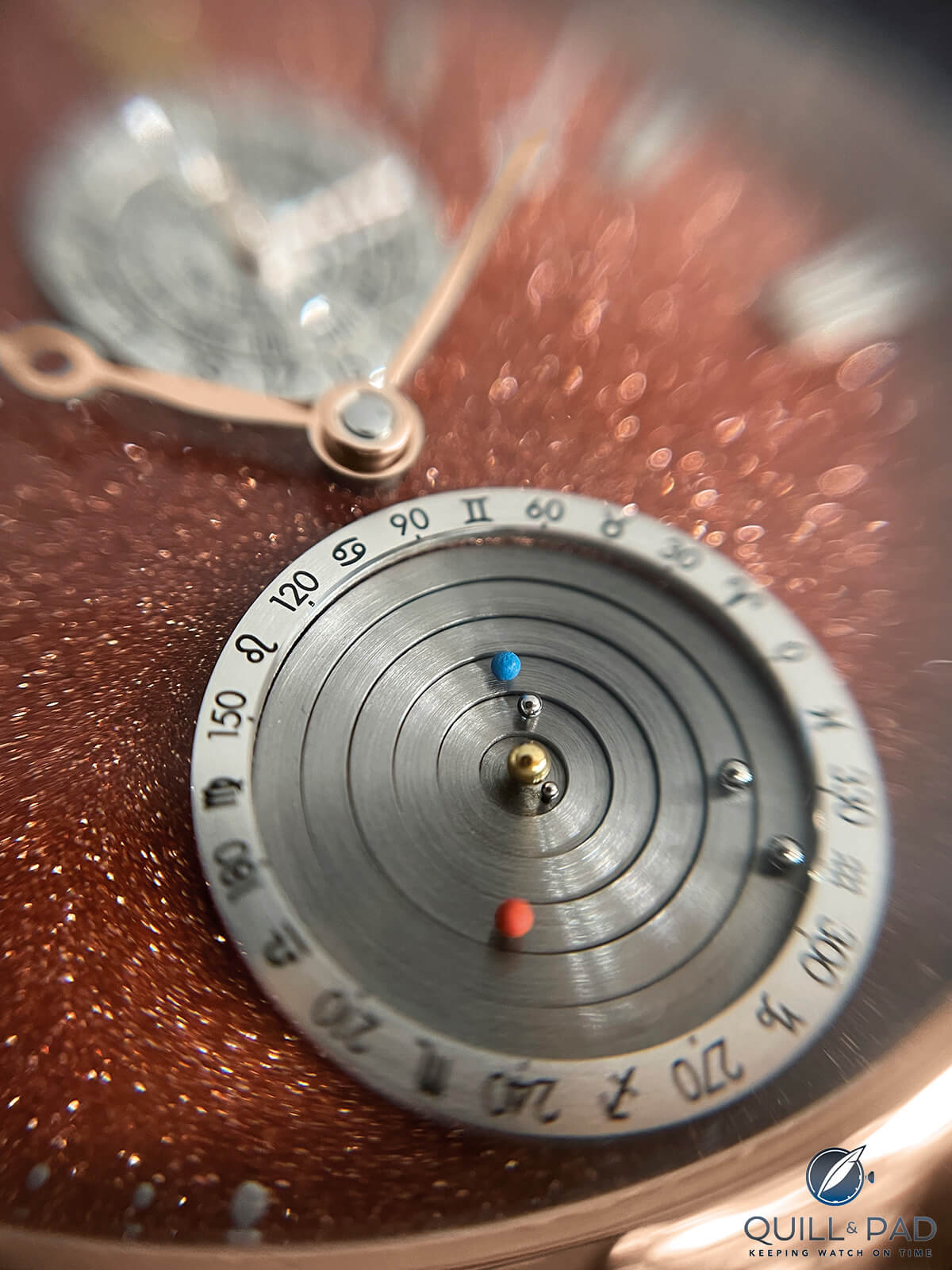
Christiaan van der Klaauw Planetarium Dunes of Mars close up of the world’s smallest planetarium
Such is also the case of the rusty red hue that Christiaan van der Klaauw selected. This color is all the more appropriate as the surface of Mars contains a high degree of iron oxide, which is responsible for the red color we associate with the planet.
Christiaan van der Klaauw offers the Dunes of Mars in three different case materials: stainless steel, white gold, and pink gold. The pink gold is a beautiful match with the red aventurine dial as they strengthen each other’s hues, creating a beautifully warm composition. Stainless steel and white gold offer more of a contrast, which has its own appeal.
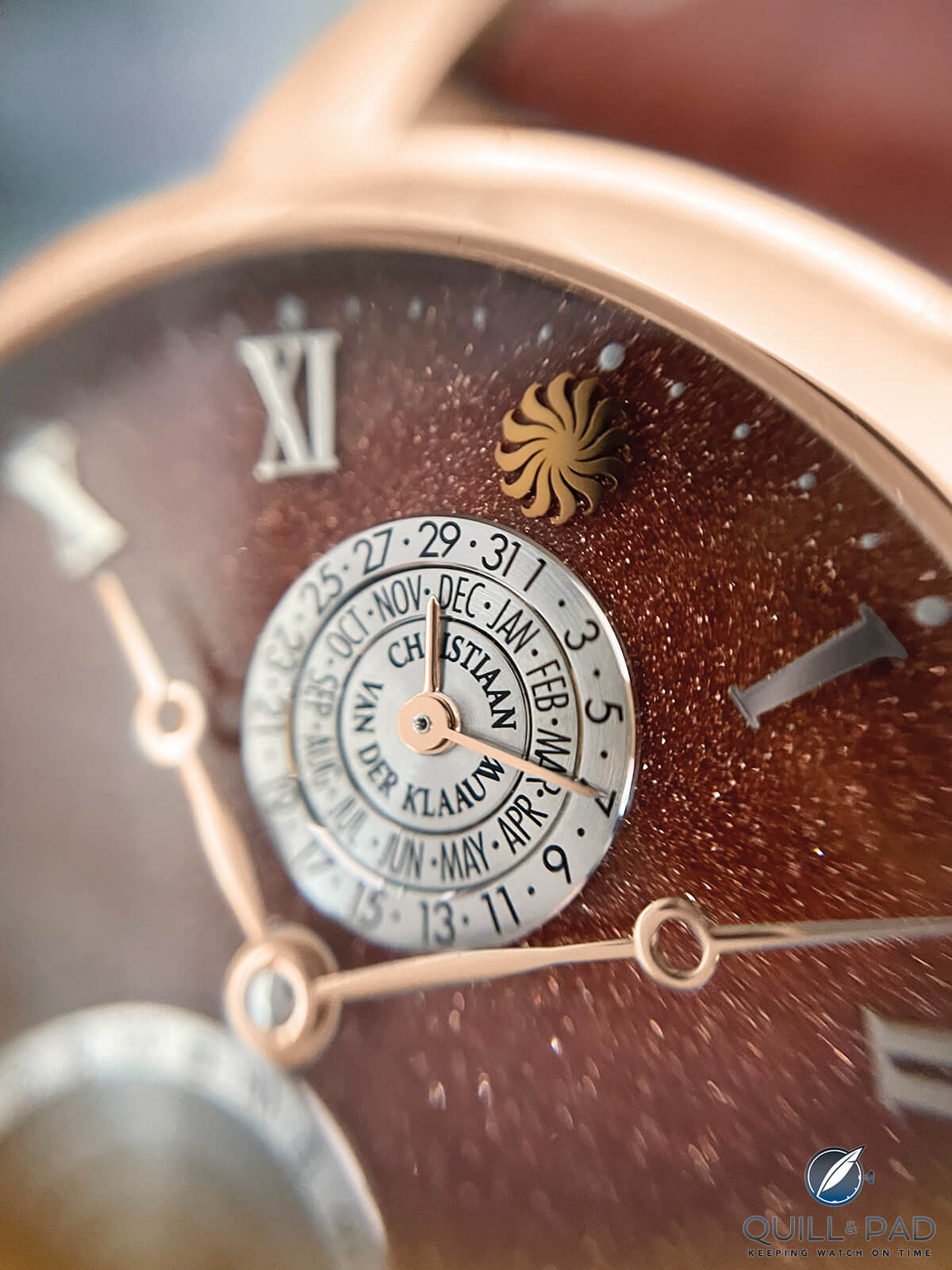
Christiaan van der Klaauw Planetarium Dunes of Mars day-date-month dial
Some people might ask why Christiaan van der Klaauw would offer the Planetarium Dunes of Mars in two case materials that look quite similar. The first reason for this is tradition. Van der Klaauw has always offered a number of its watches – even the most complicated ones – in stainless steel. Christiaan van der Klaauw even offers stainless steel watches with a diamond setting because of the superb polish that can be achieved on stainless steel but not white gold.
Another reason is affordability. While a Planetarium was never going to be an inexpensive watch, paying €75,300 for a white gold version or €49,500 for stainless steel is quite a difference, making it obtainable for a larger group of watch connoisseurs.
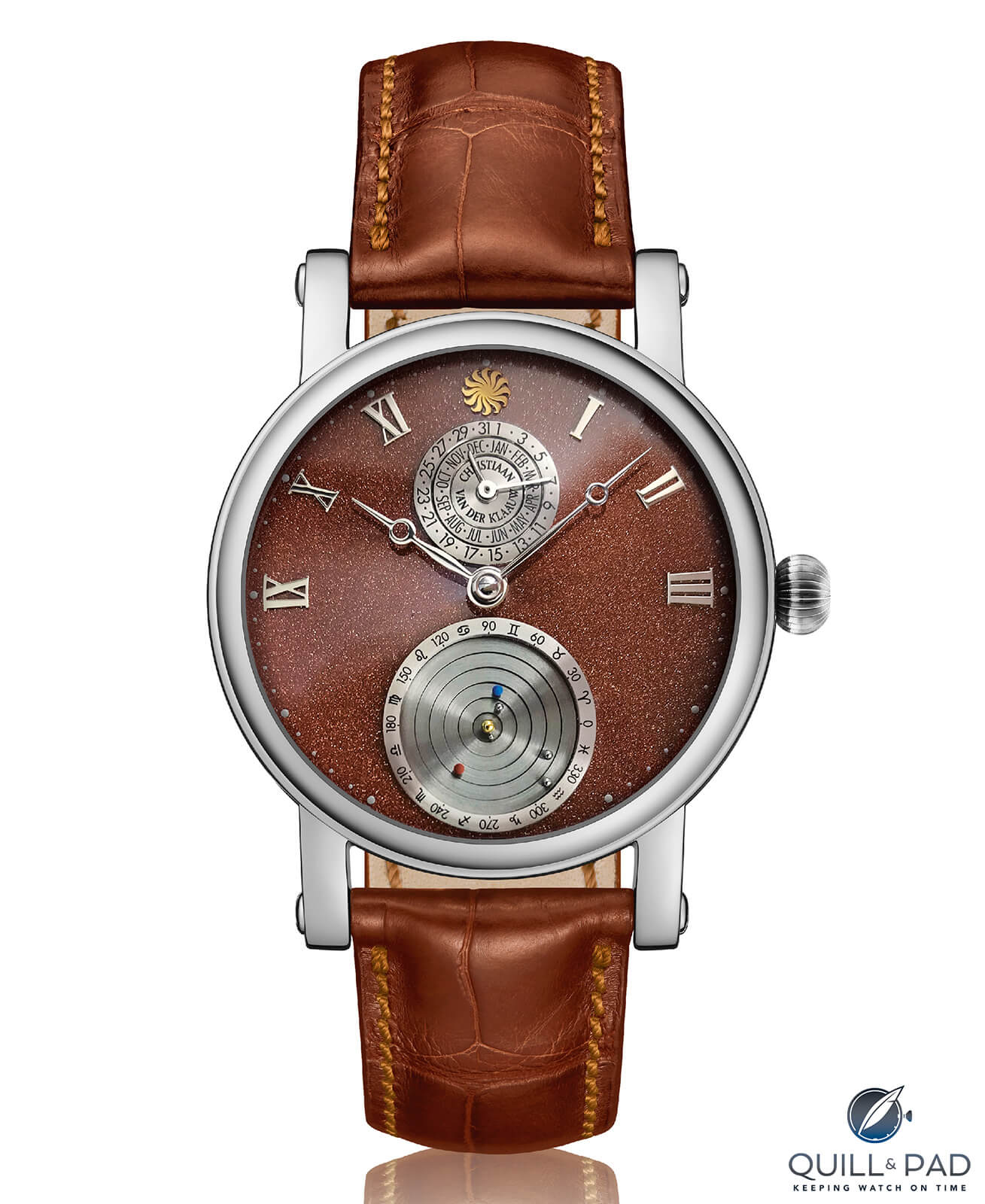
Christiaan van der Klaauw Planetarium Dunes of Mars in white gold
Why would one consider buying the white gold version over stainless steel? That is a question answered by details, as the white gold offers a bit more heft and a softer hue, reminiscent of moonlight. Then there is the fact that the owner knows that it is a precious metal, which also plays a significant role in the minds of people.
Regardless of the preferred case metal, exclusivity is guaranteed as Christiaan van der Klaauw will only make six pieces in each of the three case metals.
For more information, please visit https://www.klaauw.com/eng/cvdk-planetarium-ckpt3304
Quick Facts Christiaan Van Der Klaauw Planetarium Dunes of Mars
Case: 40 mm, stainless steel, white gold, or pink gold
Dial: red aventurine
Movement: automatic Caliber CVDK7386, twin spring barrels, 96-hour power reserve, 4 Hz/28,800 vph frequency
Functions: hours, minutes; date, month; world smallest mechanical planetarium
Limitation: 6 pieces in each case metal
Price: €49,500 (stainless steel), €70,000 (pink gold), €75,300 (white gold)
You may also enjoy:
Christiaan Van Der Klaauw Planetarium Eise Eisinga: Taking The Solar System From The Ceiling And Putting It On Your Wrist
Aventurine: Sparkling, Glittering, Mysterious, And Placing A Galaxy Of Stars On Your Wrist



Leave a Reply
Want to join the discussion?Feel free to contribute!